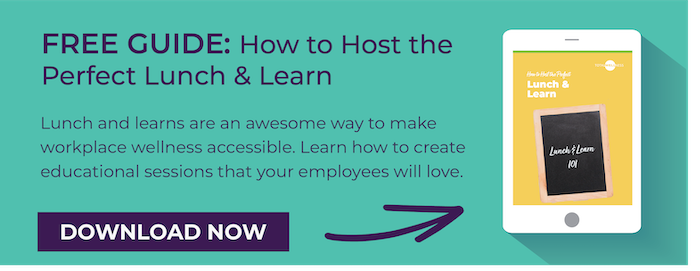![]() You may notice when an employee is out with the flu. But have you ever noticed when an employee is money sick?
You may notice when an employee is out with the flu. But have you ever noticed when an employee is money sick?
A house lien. Medical bills. Car repossession. Divorce.
The list of ways your employees can be financially sick is endless. As you may know, employee financial health is crucial to the wellness of your company.
How can you help?
We share our research and tips below.
Financial Illness Impacts the Workplace
Financial worries not only keep employees up at night, but the emotional impact spills over into the workplace, too. Employees distracted by financial illness also create significant costs for employers in productivity and work errors.
According to research by the Center for Financial Services Innovation (CFSI), the cost is high:
- 1 in 4 workers are often living paycheck-to-paycheck
- 1 in 3 workers find personal finances a distraction at work
- Employers may spend $7k per year per employee dealing with a financial crisis
The anxiety and anguish that comes with personal financial challenges doesn’t just stay at home, unfortunately. It’s also not limited to one industry, personality type, or salary range.
Employers who take interest in employees’ financial health keep workers on track professionally and personally. Often, the payoff is worth the initial investment in a financial program, too.
Why Employee Finances Matter
Workers grappling with high amounts of financial stress are less satisfied at work, which leads to lowered retention rates. One of the biggest costs is the total impact employee replacement has on organizations. Research shows companies can spend up to 200% of an employee’s annual salary due to the production process, hiring, and retraining.
Here are seven more reasons:
Increased productivity
Workers who are debt-free don’t have to bring financial worries to work. They can concentrate fully on their job.
Higher employee retention
Workers dealing with high amounts of financial stress are less likely to be satisfied at work, which leads to low retention rates.
Better retirement readiness
When employees are financially secure, they can fund their retirement with ease. That means less of a healthcare burden on employers when workers retire younger.
Improved job satisfaction
Instead of stressing about not making enough money, employees can fully enjoy what they do. Working for income becomes secondary.
Reduced distractions
When the debt collectors aren’t calling the workplace every hour, it makes it a lot easier for employees to focus.
Lowered stress rates
Life has enough stressors. Assist employees by giving them tools to strengthen their financial health. It will help them feel in control — and less stressed — which means better productivity and health.
Reduced health care costs
Employees who are stressed get sick. Financial stressors are no exception. If an employee is financially secure, they can stay healthier or go to the doctor on time because they can afford it.
Ways to Help Employee Financial Wellness
It’s easier than you might think to get employees back to feeling financially well. It does take some organization, but it’s well worth the investment. Employers who offer reliable financial tools will find better employee loyalty and bottom line increases. Plus, it’s a great benefit to tout when recruiting new talent.
Here’s How to Help:
Identify At-Risk Employees
See which employees are regularly borrowing from their 401k. It may be an indicator something is amiss financially. Ask for a meeting to clarify their retirement goals. The meeting can offer insight into an employee’s struggles, which presents an opportunity to share resources.
Address Steps to Financial Fitness
Encourage employees to plan ahead, save, and work toward financial peace. Taking small steps like building a $1,000 emergency fund and paying off all debt (smallest to largest) are two easy ways to build security.
After that’s done, encourage employees to get 3-6 months of savings in the bank. Dave Ramsey’s money management plan works well for ambitious employees willing to change their spending and saving behaviors. Print and hang the steps on a bulletin board dedicated to financial resources.
Lunch and Learn Sessions
Bring in a financial expert once a month to talk about topics like saving, paying down debt, and retirement planning. Hosting sessions over lunch will help employees feel more relaxed while gaining valuable information.
Take Money Temperatures
Have employees take a financial health quiz. Send the quiz out via your newsletter, or offer it as a lunch and learn resource. Offer financial counseling services or resources for those who seek it. Unexpected emergencies happen, and if employees can have the cash to cover it, there’s much less of a financial setback.
Check Your Company’s Financial Wellness
Consider bringing a program into your workplace to help employees gain financial wellness. This program encourages budgeting, emergency savings, debt elimination, and retirement planning.
Make Money Talk Acceptable
Money can be an uncomfortable topic to talk about, but it doesn’t have to be. If you build a culture of acceptance when it comes to financial discussions, money doesn’t become taboo. Financial workshops, sharing resources, and smart money programs are all ways to nurse employees back to financial health.
What resources do you share with your employees about financial planning and security? Let us know in the comments below!



